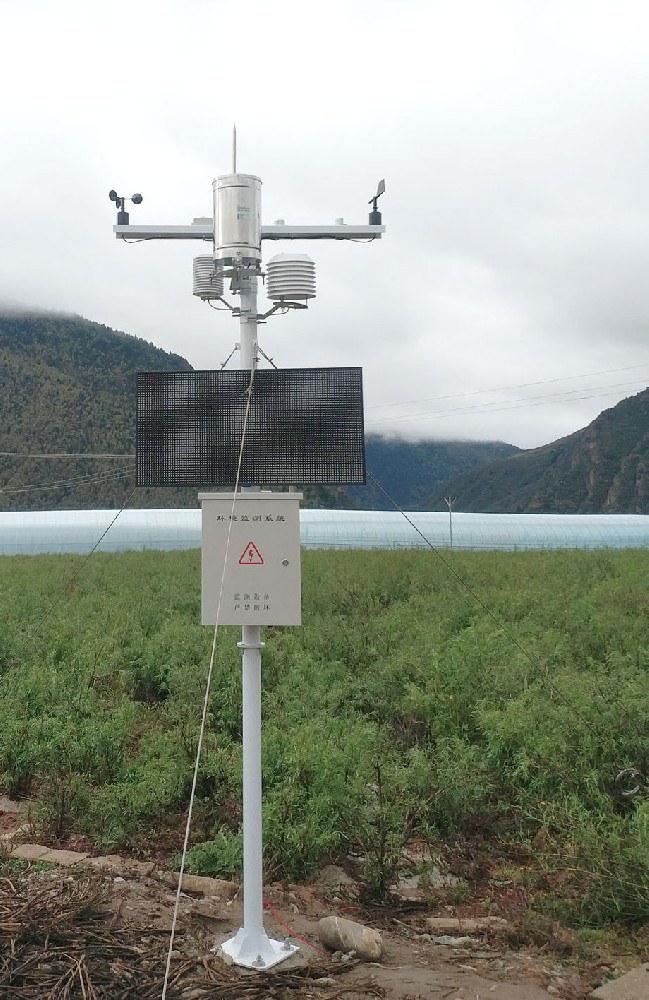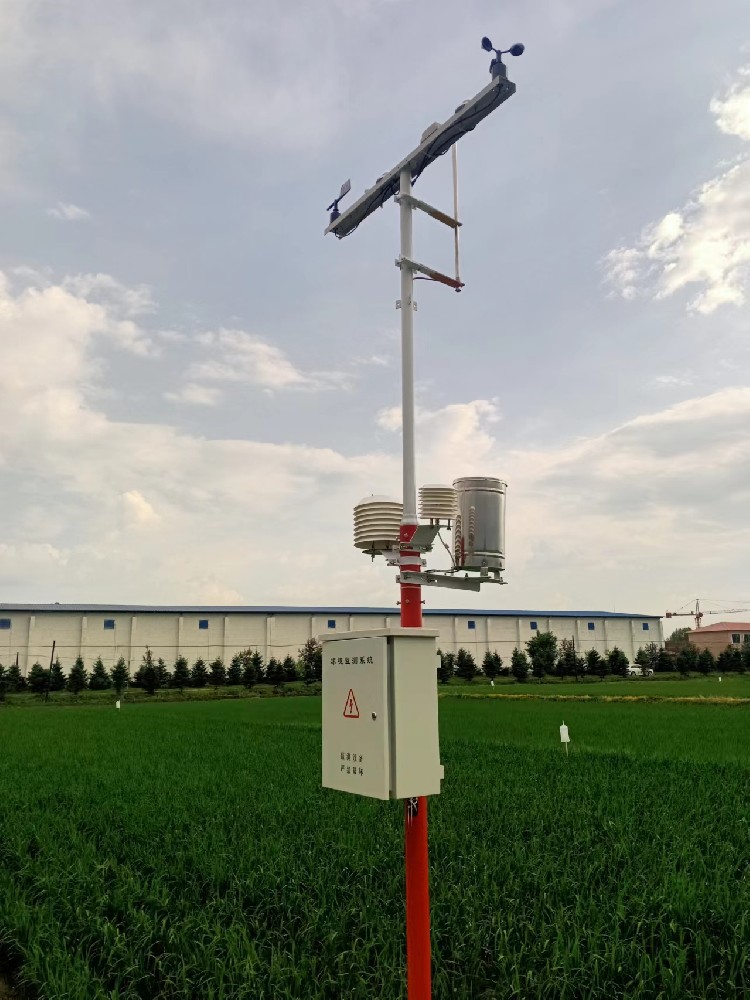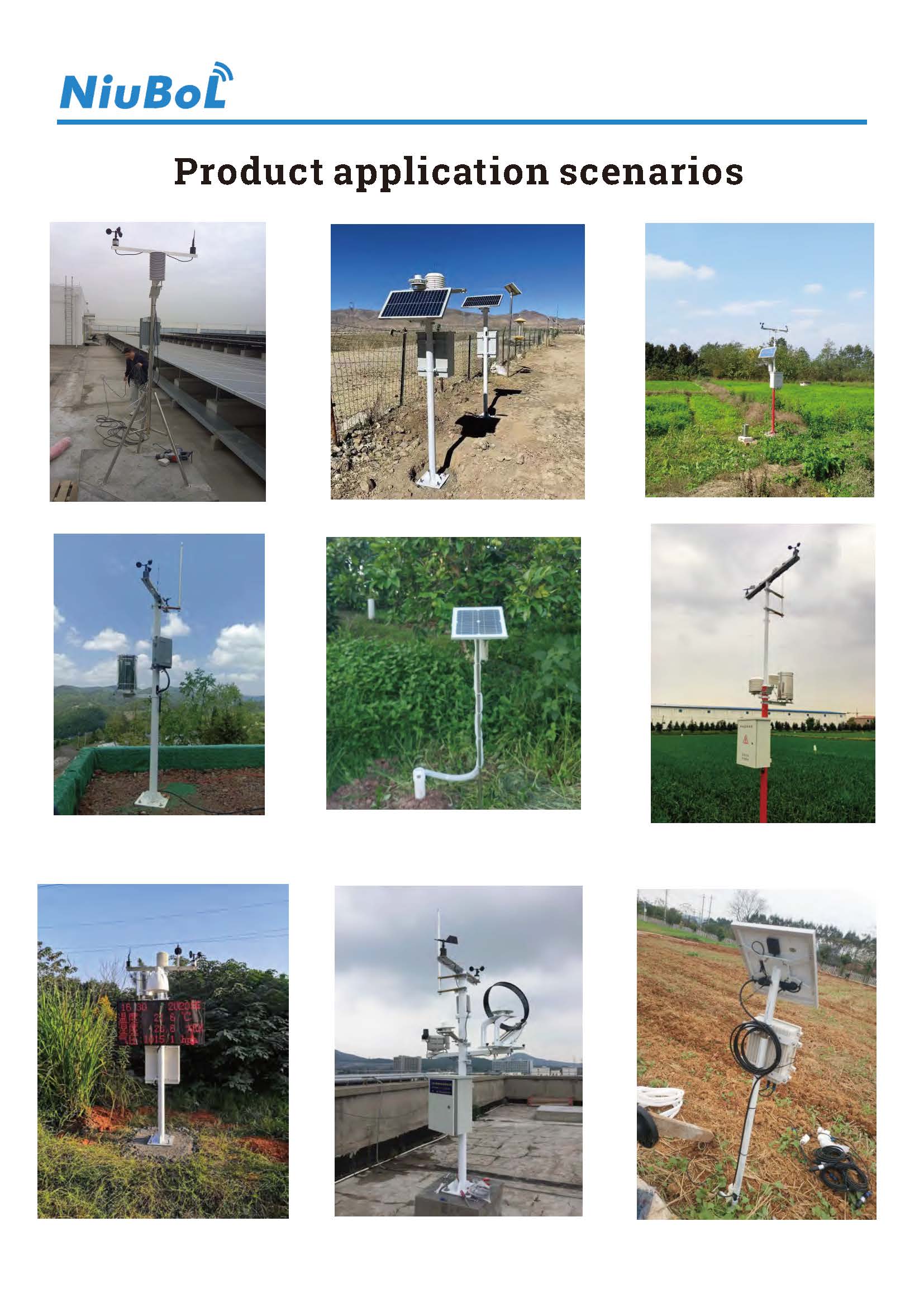

— Blogs —
—Products—
 Consumer hotline +8618073152920
Consumer hotline +8618073152920 WhatsApp:+8615367865107
Address:Room 102, District D, Houhu Industrial Park, Yuelu District, Changsha City, Hunan Province, China
Product knowledge
Time:2024-09-22 17:14:58 Popularity:1318
Weather station is a scientific facility used to observe and record the atmospheric conditions, which collects and processes a large amount of meteorological data through regular and continuous observation of various meteorological elements, such as temperature, humidity, wind speed, wind direction, barometric pressure, precipitation, sunshine hours and etc. These data are not only used for daily weather forecasting, but also provide important support for meteorological research, climate change monitoring, agricultural production, aviation and navigation safety and other fields. These data are not only used for daily weather forecasting, but also provide important support for meteorological research, climate change monitoring, agricultural production, aviation and navigation safety and other fields.
The core equipment of a weather station is weather sensors, which are responsible for measuring and recording various weather elements. The following are several common weather sensors and their roles:
Weather stations are very important for agriculture because weather conditions have a direct impact on crop growth and agricultural activities.
1. Temperature sensors: measure air and soil temperatures, which have a significant impact on crop growth and the incidence of pests and diseases.
2. humidity sensors: monitor air and soil moisture, which is critical for irrigation and crop water management.
3. wind speed and direction sensors: provide information on wind, which affects crop growth and agricultural spraying operations.
4. precipitation sensors: measure precipitation, which is critical for irrigation scheduling and flood control measures.
5. barometric sensors: measure atmospheric pressure, which is closely related to weather changes and crop growth.
6. sunlight sensor: measuring sunlight hours, important for crop photosynthesis and growth cycle.
7. Light Sensor: Measurement of light intensity, which guides the light management of the crop and ensures the efficiency of photosynthesis.
8. CO2 sensor: especially important in greenhouses to monitor CO2 concentration and optimize plant growth environment.
9. Soil temperature and humidity sensors: accurately measure the temperature and humidity of the soil, which is essential for the development of the crop's root system.
There are also special-purpose sensors, such as radiometers and snow sensors, which play an important role in weather monitoring and forecasting.
Agriculture is extremely sensitive to meteorological conditions, and weather stations provide accurate meteorological data support for agriculture, thus bringing a series of benefits:
Weather stations are able to monitor and record various meteorological elements in real time, such as temperature, humidity, wind speed, wind direction, precipitation, barometric pressure, etc., providing farmers with accurate and timely weather information. Such information is crucial to farmers as they directly affect the growth and development of crops.
Guiding farming activities: Based on the data provided by weather stations, farmers can arrange farming activities scientifically. For example, sowing, fertilizing, irrigating and pest control are carried out under suitable weather conditions to increase the growth rate and yield of crops. Meanwhile, farmers can also take measures in advance to prevent natural disasters, such as heavy rainfall, drought and frost, according to the weather forecast, so as to reduce crop losses.
Data from weather stations can help farmers better understand the ecological environment of farmland, so as to develop more reasonable agricultural production plans and management strategies. For example, by monitoring soil humidity and temperature, farmers can accurately irrigate to avoid water waste; by monitoring wind direction and wind speed, farmers can optimize the layout of crops and reduce wind damage losses.
Meteorological conditions have an important impact on the quality of crops. Data from weather stations can help farmers understand the growth of crops under different meteorological conditions, so that they can take corresponding measures, such as adjusting the amount of fertilizer and improving irrigation methods, in order to improve the quality and taste of crops.
Data from weather stations provide important basic information for agricultural research. Researchers can use these data to study the relationship between crop growth and meteorological conditions, develop new agricultural technologies and varieties, and promote agricultural science and technology innovation and progress.
Data from weather stations can also support agricultural insurance and financial services. By assessing the risk and loss of meteorological disasters, insurance companies can provide farmers with more accurate insurance services; at the same time, financial institutions can also use meteorological data to assess the risk and return of agricultural projects and provide farmers with better financial services.
- Precision agriculture: by using data from weather stations, agricultural management can be carried out more precisely to improve crop yield and quality.
- Intelligent agriculture: By using the data from weather stations, intelligent agricultural systems can be developed to automate and intelligentize agricultural production.
- Agricultural insurance: data from weather stations can help insurance companies assess agricultural risks and develop more reasonable agricultural insurance policies.
To summarize, weather stations are of great significance to agriculture. They provide key meteorological data for agriculture, helping farmers to carry out agricultural management more scientifically and accurately, improve crop yield and quality, and reduce the waste of resources at the same time. As technology continues to advance, weather stations will play an even greater role in agriculture.

How weather stations can add value to agriculture:
- Data-driven decision-making: Utilizing weather station data to implement precision agriculture practices and reduce resource waste.
- Intelligent management: Combine with the Internet of Things (IoT) technology to implement automated irrigation, fertilization, etc. to reduce labor costs.
- Disaster Early Warning: Predict extreme weather in advance to reduce disaster losses and ensure food security.
- Environmental sustainability: Reduce the impact on the environment through precise management and realize green agriculture.
- Market Response: Quickly adapt to climate change and adjust planting structure to meet market demand.
Weather station data plays an important role in reducing agricultural risk because weather conditions have a significant impact on agricultural production, and weather stations can provide critical weather information to help farmers and agribusinesses make smarter decisions to reduce potential losses. Here are a few ways how weather station data can help reduce agricultural risk:
1. Crop growth cycle management:
- With weather station data, farmers can better understand the growth cycle and critical growth periods of their crops so that they can rationalize their farming activities, such as planting, fertilizer application, and pest and disease control.
- Meteorological data can also help farmers predict the maturity of crops so that they can harvest in time to avoid losses caused by weather changes.
2. Weather warning:
- Data from meteorological stations can be integrated with weather forecasting systems to provide farmers with timely weather warnings, including possible extreme weather events, such as drought, flooding, hail, frost, etc. The data from meteorological stations can be used to provide farmers with timely weather warnings.
- Early warning information can help farmers take preventive measures, such as early irrigation, cover crops, and crop shifting, to minimize the impact of weather disasters on crops.

3. Insurance claims:
- Data from meteorological stations can be used as an important basis for agricultural insurance claims, helping insurance companies to assess the extent and causes of losses.
- Accurate weather data can reduce disputes in the claims process and ensure that farmers can get the compensation they deserve.
4. Market risk management:
- Data from weather stations can help farmers predict crop yields and quality, and thus better manage market risks.
- Farmers can adjust their marketing strategies based on weather data to avoid losses due to oversupply in the market.
5. Sustainable agricultural practices:
- Weather data supports sustainable agricultural practices, such as precision irrigation and fertilization, to reduce environmental impacts.
- With weather data, farmers can utilize resources more efficiently and reduce losses due to wasted resources.
By using data from weather stations, farmers can better predict and respond to weather risks, thereby reducing losses in agricultural production. As technology advances, the data analysis capabilities and applications of weather stations will continue to expand, providing more comprehensive risk management support for agriculture.

In summary, weather stations are devices specifically designed to collect, analyze, and report on atmospheric conditions, and their application in agriculture is a core component of precision agriculture. Weather stations continuously monitor environmental parameters closely related to agriculture through a series of high-precision sensors.
The use of weather stations in agriculture is key to improving the efficiency and sustainability of agricultural production. By integrating multiple sensors, it provides a scientific management approach that helps farmers make data-based decisions that optimize resource use, increase yields, reduce environmental impacts, and ultimately increase the overall value of agriculture. Through the practice of precision agriculture, the Weather Station not only enhances the resilience of agriculture, but also provides an important tool for realizing modern agriculture that is both environmentally friendly and economically efficient.
Prev:What are sensors in precision agriculture?
Next:Smart Farming Sensor Configuration Guide: monitoring solution for a 5-acre farm
Related recommendations
Sensors & Weather Stations Catalog
Agriculture Sensors and Weather Stations Catalog-NiuBoL.pdf
Weather Stations Catalog-NiuBoL.pdf
Related products
 Combined air temperature and relative humidity sensor
Combined air temperature and relative humidity sensor Soil Moisture Temperature sensor for irrigation
Soil Moisture Temperature sensor for irrigation Soil pH sensor RS485 soil Testing instrument soil ph meter for agriculture
Soil pH sensor RS485 soil Testing instrument soil ph meter for agriculture Wind Speed sensor Output Modbus/RS485/Analog/0-5V/4-20mA
Wind Speed sensor Output Modbus/RS485/Analog/0-5V/4-20mA Tipping bucket rain gauge for weather monitoring auto rainfall sensor RS485/Outdoor/stainless steel
Tipping bucket rain gauge for weather monitoring auto rainfall sensor RS485/Outdoor/stainless steel Pyranometer Solar Radiation Sensor 4-20mA/RS485
Pyranometer Solar Radiation Sensor 4-20mA/RS485
Screenshot, WhatsApp to identify the QR code
WhatsApp number:+8615367865107
(Click on WhatsApp to copy and add friends)
